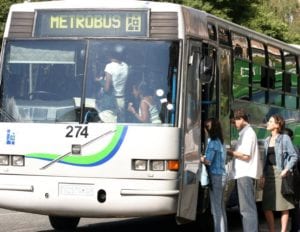 With a litre of petrol now costing South Africans as much as a 2-litre bottle of Coca-Cola, and petrol prices predicted to continue increasing, more South African motorists are likely to consider switching to public transport.
With a litre of petrol now costing South Africans as much as a 2-litre bottle of Coca-Cola, and petrol prices predicted to continue increasing, more South African motorists are likely to consider switching to public transport.
- Motorists use their phones for an average of 1 minute, 52 seconds for every hour they spend behind the wheel;
- 40% of motorists use their phones at least once at any given hour they are driving; and
- Out of 100 trips, motorists will use their phones 88 times.
According to Professor Jackie Walters, Head of the Department of Transport and Supply Chain Management, due to regulatory requirements, bus operators could be more efficient in that they have to adhere to prescribed timetables and routes, regardless of whether the bus is at full capacity or not.
They must also offer services (albeit limited) during the evenings, over weekends and public holidays. Regarding fares, Walter said many non-profitable bus routes are kept active to meet the social needs of the population and bus fares subsidised to make this form of public transport more affordable to the general public. Bus operations are also independently monitored to ensure that contracted services (where they are in place) adhere to contract requirements. Walters noted that in terms of safety, bus companies spend significant amounts on training and training facilities and invest in the business and operational infrastructure such as office space, depots and maintenance and training facilities. “Drivers are, for instance, formally trained and re-trained on driving buses safely and are fully aware of their responsibilities. “Regarding road-worthiness, buses must be maintained according to the specifications prescribed in the National Road Traffic Act and road-worthy tests are compulsory every six months.”







